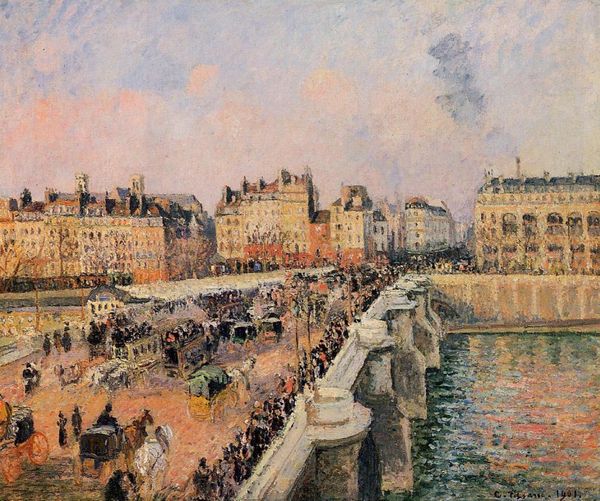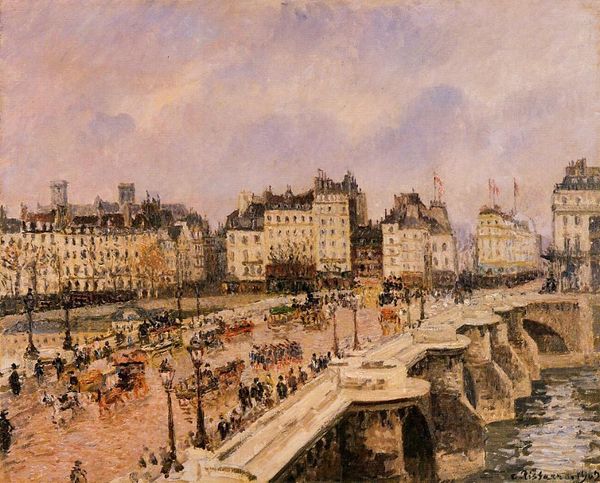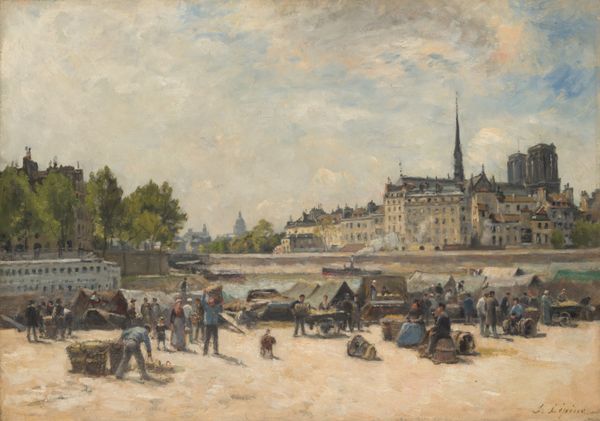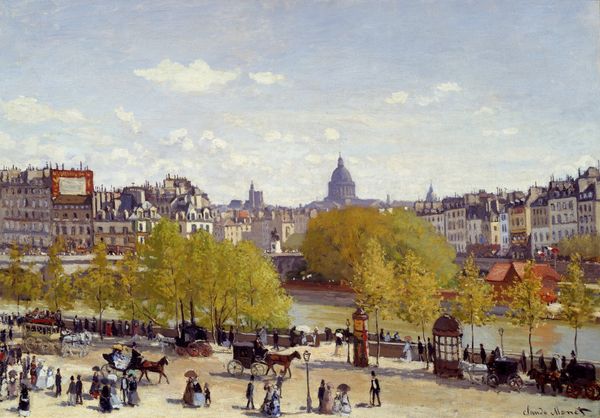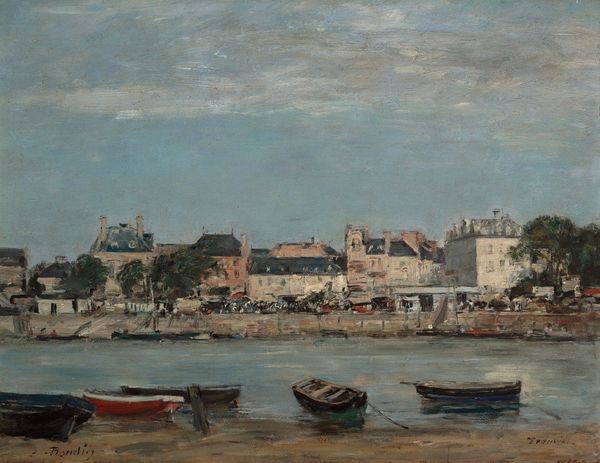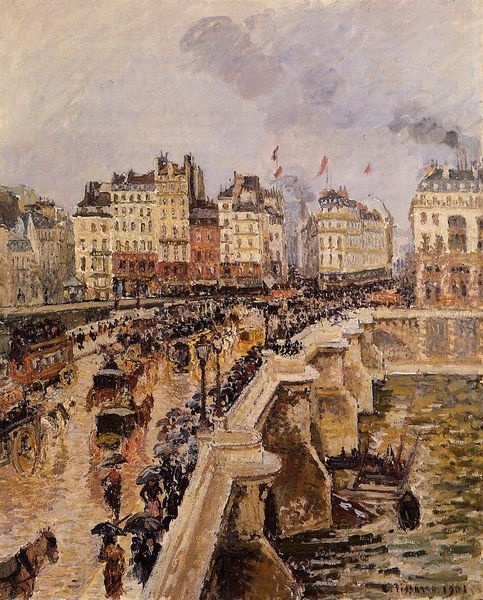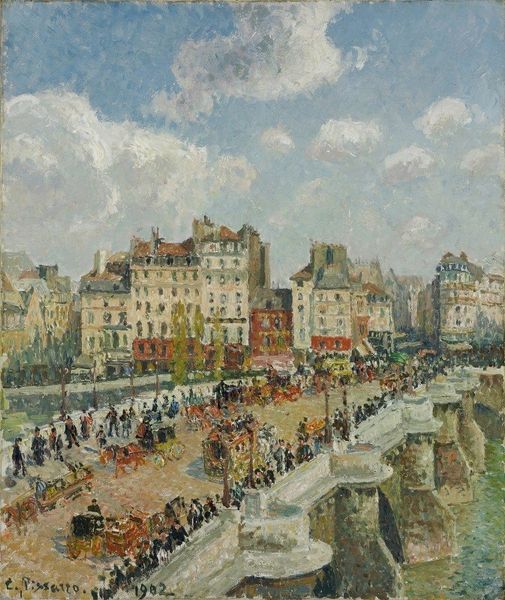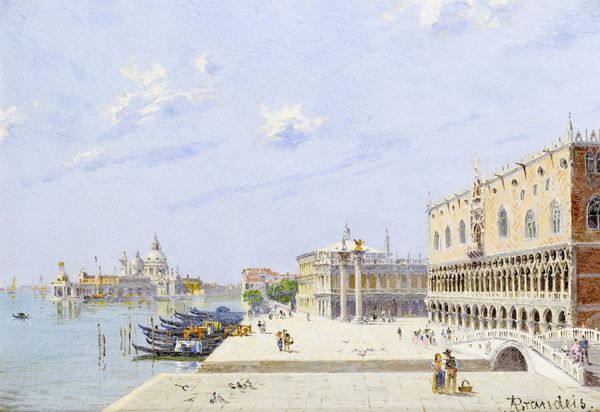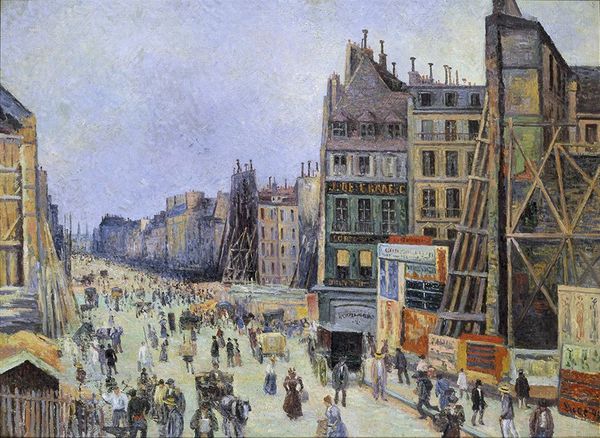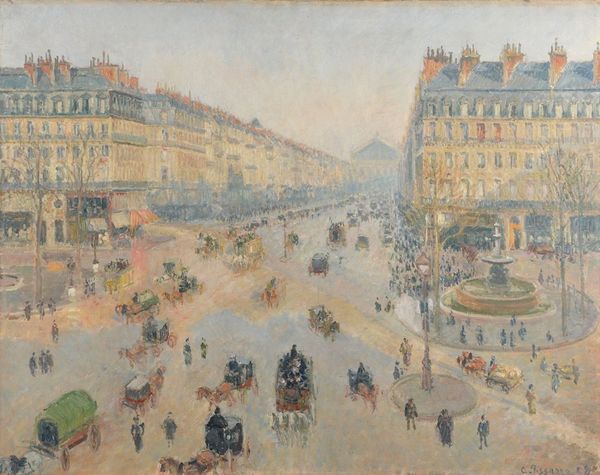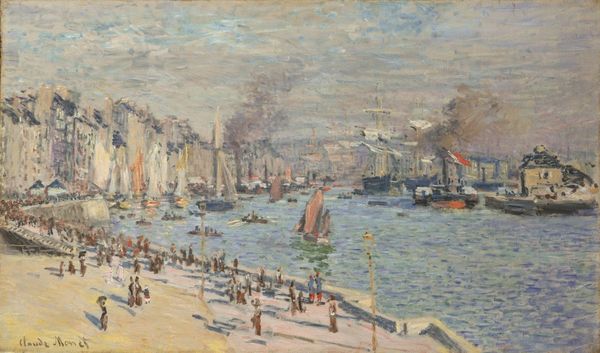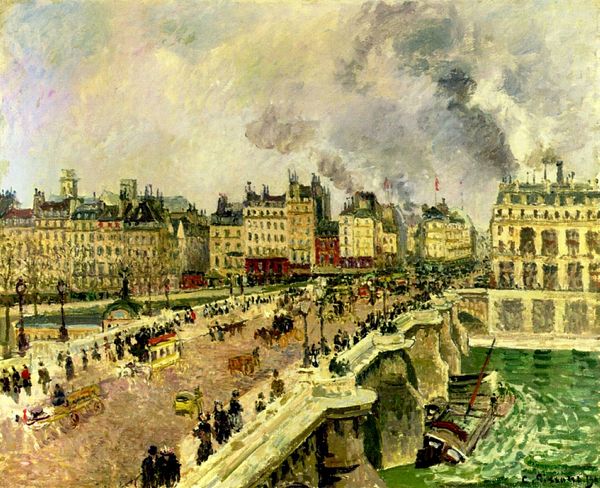
painting, plein-air, oil-paint
#
narrative-art
#
painting
#
impressionism
#
plein-air
#
oil-paint
#
landscape
#
impressionist landscape
#
figuration
#
oil painting
#
cityscape
Copyright: Public Domain: Artvee
Curator: Looking at Renoir's "Pont Neuf, Paris" from 1872, what strikes you first? Editor: It’s just effervescent. The light and air seem to vibrate. There's a casual, almost snapshot quality that belies a sophisticated composition. The muted tones create an unusual, calm energy in such a bustling cityscape. Curator: This piece provides a glimpse into a Paris undergoing rapid transformation. Renoir painted it en plein air, capturing the immediacy of modern life on the Pont Neuf, a site that has witnessed centuries of Parisian history. He focuses on the everyday lives of the citizens of Paris going about their lives. Editor: Absolutely, the bridge itself is symbolic – a connection point, a place of exchange. The way Renoir renders the figures, blurred and active, emphasizes the transience and anonymity of urban existence, this feeling of not only being among a crowd, but part of one. The blurred figures feel modern. Do you think Renoir’s painting also captures that new reality of urban life? Curator: Indeed. This painting coincides with the period of the Third Republic, just after the Franco-Prussian War and the Paris Commune. Renoir chooses not to depict overt political statements. Rather, the painting suggests resilience and recovery through the simple, joyous portrayal of Parisians enjoying a beautiful day, signaling optimism for a country in recovery. There's also the use of light that links to broader social concerns. Notice how he directs it not on to specific individuals or to point out disparity but how it washes over all equally. Editor: The very air of nonchalance is striking. The sky is nearly as busy as the crowds below. In terms of visual language, the bridge acts like a stage, framing and elevating the activities below, with a compositional link of light and activity to the sky above, while at the same time serving to physically keep those below connected with the other side of the Seine. I can’t help thinking it’s all a clever little metaphor. Curator: Interesting, I can certainly appreciate your reading of those elements. Ultimately, “Pont Neuf, Paris,” for me, remains an open window onto a pivotal era. It makes me contemplate the ways art reflects the intricacies of identity and society in the 19th century, inviting dialogues about the political landscape, the city itself, and modern life at that time. Editor: For me, the painting becomes about light and movement captured as a shared and comforting experience – connecting individuals across time through our experience of the bridge. A symbol, I think, we can still feel today.
Comments
No comments
Be the first to comment and join the conversation on the ultimate creative platform.
